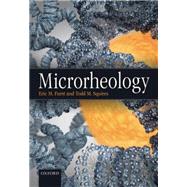- ISBN: 9780198867098 | 0198867093
- Cover: Paperback
- Copyright: 1/26/2021
This book presents a comprehensive overview of microrheology, emphasizing the underlying theory, practical aspects of its implementation, and current applications to rheological studies in academic and industrial laboratories. The field of microrheology continues to evolve rapidly, and applications are expanding at an accelerating pace. Readers will learn about the key methods and techniques, including important considerations to be made with respect to the materials most amenable to microrheological characterization and pitfalls to avoid in measurements and analysis. Microrheological measurements can be as straightforward as video microscopy recordings of colloidal particle Brownian motion; these simple experiments can yield rich rheological information. Microrheology covers topics ranging from active microrheology using laser or magnetic tweezers to passive microrheology, such as multiple particle tracking and tracer particle microrheology with diffusing wave spectroscopy.
Overall, this introduction to microrheology informs those seeking to incorporate these methods into their own research, or simply survey and understand the growing body of microrheology literature. Many sources of archival literature are consolidated into an accessible volume for rheologist and non-specialist alike. The small sample sizes of many microrheology experiments have made it an important method for studying emerging and scarce biological materials, making this characterization method suitable for application in a variety of fields.
Overall, this introduction to microrheology informs those seeking to incorporate these methods into their own research, or simply survey and understand the growing body of microrheology literature. Many sources of archival literature are consolidated into an accessible volume for rheologist and non-specialist alike. The small sample sizes of many microrheology experiments have made it an important method for studying emerging and scarce biological materials, making this characterization method suitable for application in a variety of fields.






